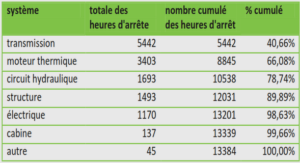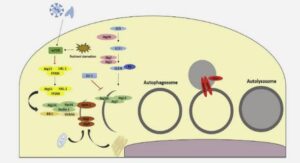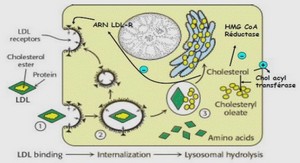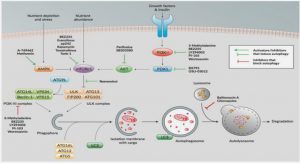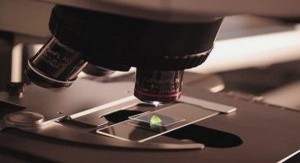Implication de la protéine PTOX dans l’oxydation non photochimique du pool de PQ
INTRODUCTION
During photosynthesis, two photosystems (PS II and PS I), coupled through an electron transfer chain, transform light energy to chemical energy. Besides this main electron transport pathway, called the `Z’ scheme of photosynthesis, alternative pathways such as cyclic electron transport around PS I (Arnon 1955; Heber & Walker 1992; Ravenel et al. 1994) and a respiratory chain called chlororespiration (Bennoun 1982; Peltier et al. 1987) have been identi¢ed in thylakoid membranes. Recent work has supplied some clues on the molecular properties of electron carriers involved in alternative pathways. First, a NAD(P)H dehydrogenase complex (Ndh), encoded by plastidial ndh genes, has been characterized in thylakoid membranes (Guedeney et al. 1996; Sazanov et al. 1998). Inactivation of ndh genes by plastid transformation was simultaneously performed by di¡erent laboratories (Burrows et al. 1998; Shikanai et al. 1998; Kofer et al. 1998; Cournac et al. 1998). It was shown that the Ndh complex is involved in the non-photochemical reduction of plasto- quinones (PQ ) occurring in the dark after a period of illumination and it was further suggested that this complex is involved in cyclic electron £ow around PS I and in chlororespiration. Although not characterized at a molecular level, the existence of other activities, such as ferredoxin quinone reductase activity (Bendall & Manasse 1995; Endo et al. 1998) or non-electrogenic NAD(P)H dehydrogenase activityödi¡erent from the Ndh complex and involved in PQ reduction (Corneille et al. 1998)öhave been reported in thylakoids. If the nature of electron carriers involved in non- photochemical reduction of the PQ pool appears better understood, the nature of electron carriers involved in plastoquinol oxidation remains a subject of controversy. Recently, a homologue to mitochondrial alternative oxidase has been simultaneously characterized in Arabidopsis thylakoid membranes by two di¡erent laboratories (Carol et al. 1999; Wu et al. 1999). This enzyme, which is encoded by the nuclear gene immutans, has been shown to be essential during carotenoid biosynthesis and it was assumed that it might catalyse plastoquinol oxidation and be involved in chlororespiration. In contrast, based on experiments performed in vitro, Casano et al. (2000) recently proposed a chlororespiration model in which plastoquinol oxidation would be achieved by a plastidial peroxidase, H2O2 being used as an electron acceptor. In order to elucidate the nature of the chlororespiratory oxidase, we have used photosynthetic mutants of the green alga Chlamydomonas and performed mass spectrometric measurements. Mass spectrometry, using 18O-labelled O2 , is a powerful way to determine whether electrons produced at PS II (measured as unlabelled O2 from water photolysis) are diverted towards O2 or to another electron acceptor. By performing such measurements in Chlamydomonas preparations lacking either the PS I complex or the cyto- chrome (cyt) b6 f complex, we show that electrons provided by PS II can be diverted at a signi¢cant rate towards a chloroplast quinol oxidase. Based on the similarity of immunological (Cournac et al. 2000) and phar- macological properties between the immutans encoded plastid terminal oxidase (PTOX) in Arabidopsis and the plastoquinol oxidizing activity in Chlamydomonas, we propose the involvement of a quinol oxidase in chlororespiration.
EXPERIMENTAL PROCEDURES
Chlamydomonas reinhardtii cells were grown on a tris^acetate^ phosphate medium (TAP). Algal cultures were maintained at 25 8C under continuous agitation and low illumination (about 1 mmol photons m 72 s71). The wild-type strain used in this work was isolated as a mt+ segregant of a cross between two strains isogenic to the 137c strain (Harris 1989). The original deletions of psaA and psaB (chloroplast genes which encode essential sub- units of PS I) were made in this strain as previously reported (Fischer et al. 1996). Marker recycling allowed subsequent transformations to delete the chloroplast petA gene, which encodes for an essential subunit of cyt b6 f (Cournac et al. 2000). Prior to thylakoid isolation, the cells were harvested, centrifuged (600 g, 5 min) and washed once with 15 mM HEPES- KOH, pH 7.2. After centrifugation in the washing medium (600 g, 5 min), the pellet (around 5 £10 8 cells) was resuspended in 10 ml bu¡er A (0.3 M sorbitol, 50 mM HEPES-KOH, pH 7.8, 2 mM EDTA, 5 mM MgCl2) supplemented with 1% bovine serum albumin (BSA). Thylakoids were obtained through disruption in a French press chamber of the cells at 5000 psi in bu¡er A + 1% BSA (two runs). After disruption, broken or intact cells and heavy parts were discarded by centrifugation (600 g, 3 min). The supernatant was then centrifuged at 3000 g. The pellet (thylakoid fraction) was resuspended in 300^500 ml bu¡er A (without BSA) and stored on ice until used in the experiments. Oxygen exchange assays were conducted in bu¡er A without BSA. Thylakoid membranes were resuspended in bu¡er A up to 1.5 ml in the measuring chamber. For measuring O2 exchange on whole cells, algal cultures were harvested in exponential growth phase, centrifuged, washed and resuspended in bu¡er A. One and a half millilitres of the suspension was placed in the measuring chamber: a Clarke electrode-type thermostated and stirred cylindrical vessel (Hansatech, Norfolk, UK) ¢tted onto a mass spectrometer connecting device. Dissolved gases were directly introduced in the ion source of the mass spectrometer (model MM 14-80, VG instruments, Cheshire, UK) through a Te£on membrane as described in Cournac et al. (1993). For O2 exchange measurements, the sample was sparged with N2 to remove 16O2 , and 18O2 (95% 18O isotope content, Euriso-Top, Les Ulys, France) was then introduced to achieve an O2 concentration in solution close to that in equilibrium with normal air. Light was supplied by a ¢bre-optic illuminator (Schott, Main, Germany) and neutral ¢lters were used to vary light intensity. Unless speci¢ed, experiments shown here were performed at 300 mmol photons m 72 s71 incident light. All gas exchange measurements were performed at 25 8C. The chloroplastic extracts were used as quickly as possible after extraction. The portion of the Arabidopsis immutans cDNA coding for the entire mature peptide (PTOX) was PCR-ampli¢ed and inserted in the Escherichia coli expression vector pQE31 (Qiagen, Courtaboeuf, France) as described elsewhere (Cournac et al. 2000; Josse et al. 2000). The recombinant membrane protein PTOX which possesses a 6 His-tag was produced in E. coli. After induction, cells were lysed and membranes were recovered upon centrifugation at 100 000 g for 1h. Pelleted membranes were resuspended in tris^HCl 0.2 M, pH 7.5, sucrose 0.75 M. Oxygen consumption was measured in a Clark O2 electrode chamber (Hansatech). A typical assay contained 100 g membrane protein in the following bu¡er: tris^ maleate 50 mM, pH 7.5, KCl 10 mM, MgCl2 5 mM, EDTA 1mM, decyl-plastoquinone 0.2 mM.

